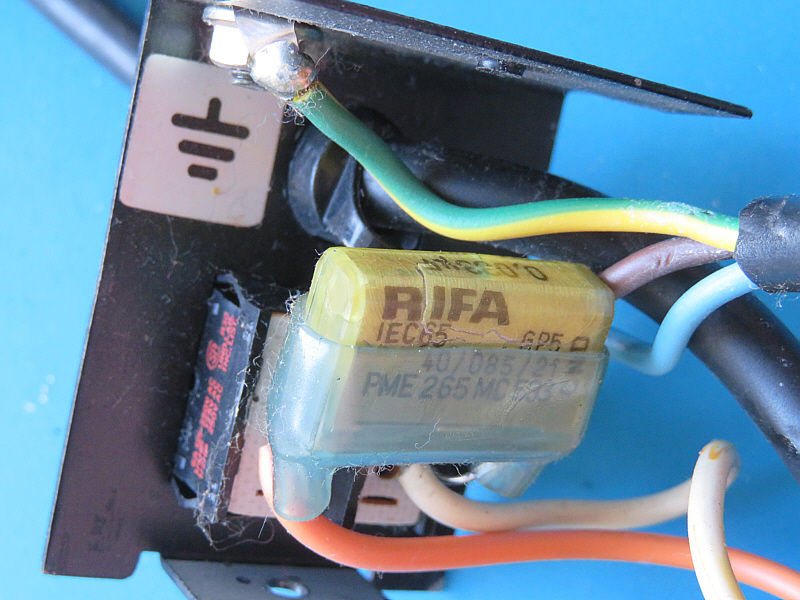However, after 40 years some parts can be prone to failure. In the case of the PME-40X these are the spark killers of the brand RIFA, 0.033µF polypropylene capacitors that prevent that sparks appear when you use the power switch. What does happen when the spark killer fails?
A few weeks ago I received yet another loaded PME-40X system. After a few minutes of testing the unit, a crackling sound appeared and stinking white smoke came out of the chassis.
Exactly that has happened before with a unit that I received from Italy in 2013. Had I known what I do now know a dozen years later, I had been able to rescue that pedalboard. Instead I only kept the two main circuit boards as spare parts, while the ill-smelling chassis with the power supply went to the recycling center.
At a German synthesizer forum someone wrote that this old type of spark killers doesn’t like humidity and after some decades they can crack. I have read several times that people in Germany call these old capacitors Knallfrösche - „firecrackers“ - and that these should better be replaced at some point.
This is the said PME-40X that had the broken spark killer. It is an „after“ picture of the repaired and completely recapped unit and it is working like new again. And I’m certain that it will do a proper job for the next decades.
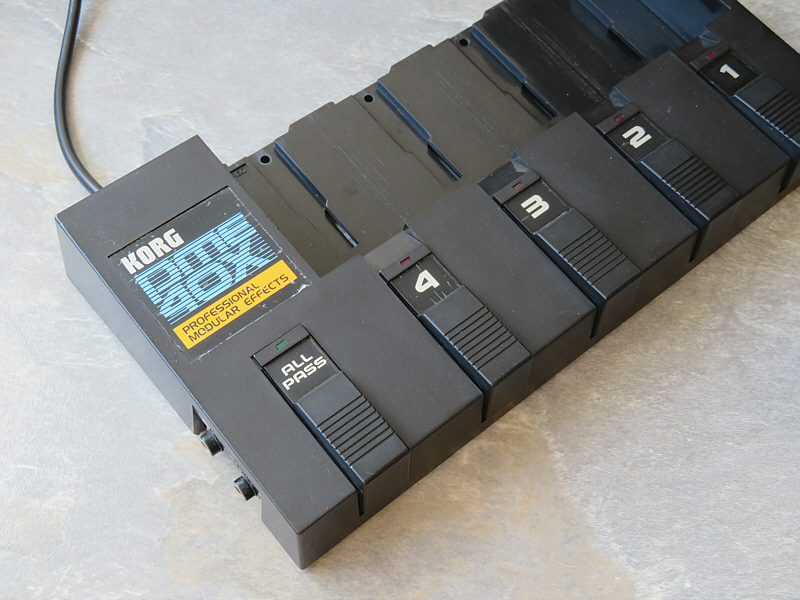
Anyone who has opened up a PME-40X might have wondered how the power supply can be disassembled. You have to remove the pedalboard’s label to gain access to the four screws that hold everything together. At first I was scared of doing that. I feared that I would damage the label, but with the use of a sharp knife it went much better than expected.
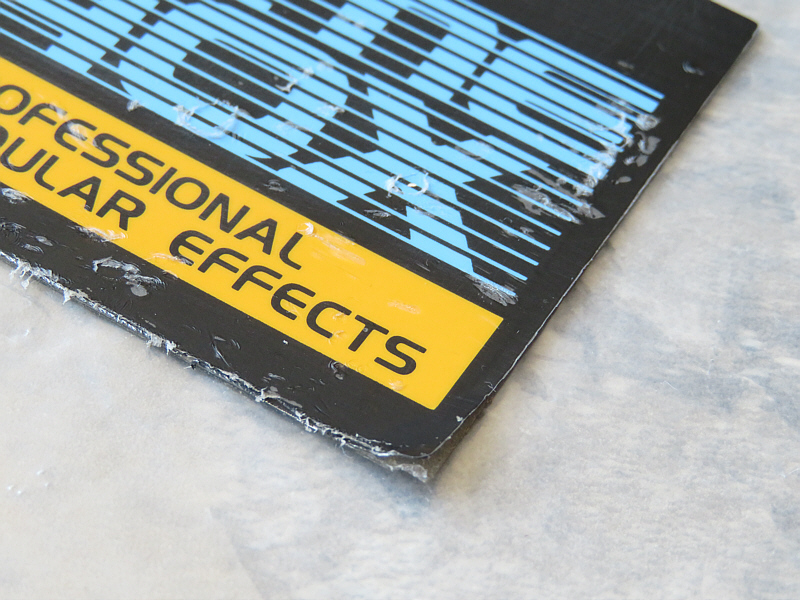
This is a picture of the adhesive label (attached on a sturdy plastic bag) from another PME-40X that I am going to recap. It didn’t work as good this time. The lower right corner is split in two layers. That is because I didn’t manage to catch the lowest layer at first try, so I damaged it slightly when lifting it. That can be glued together again. But in the picture you can also see what happens if you remove the transparent plastic layer on the top. The paint will come off and only the silver base material can be seen, as you can see in the middle of the large "X". So better keep it on the label, even if it is completely wrinkled and blistered, because it protects the graphics. The same goes to the small labels of the five pedals. I have removed these layers of a PME-40X once. I can assure that it doesn’t look better this way and the paint is going to wear off over time.
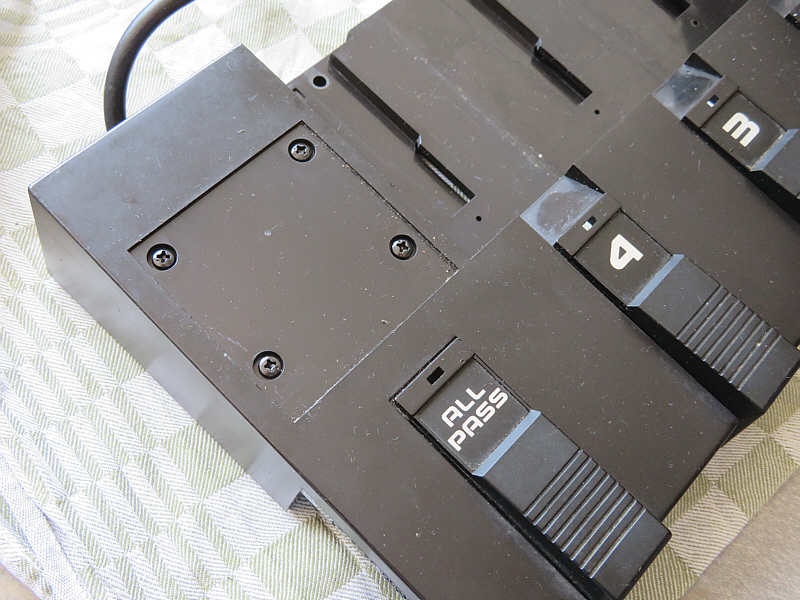
Now the four screws can be removed, also those of the back of the pedalboard. You might want to go sure, though, that you keep the screw with the ground wire attached (it is the screw that is closest to the power cord, see blue arrow in the next picture) to spare you some fiddly work. Then disassemble the two circuit boards to remove the wires with the connectors. Here you can see the power supply with the spark killer (red arrow).
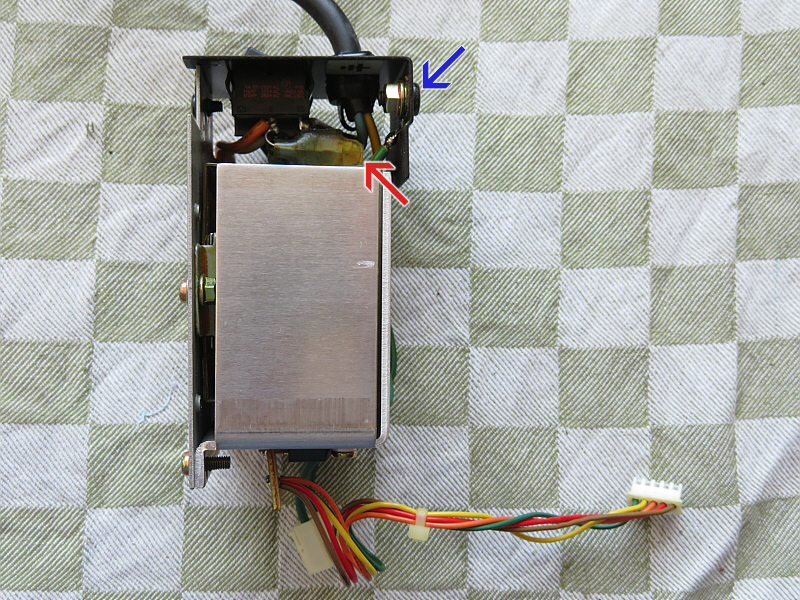
Remove the black screw, leave the brass screws attached. Then you can desolder the old spark killer.
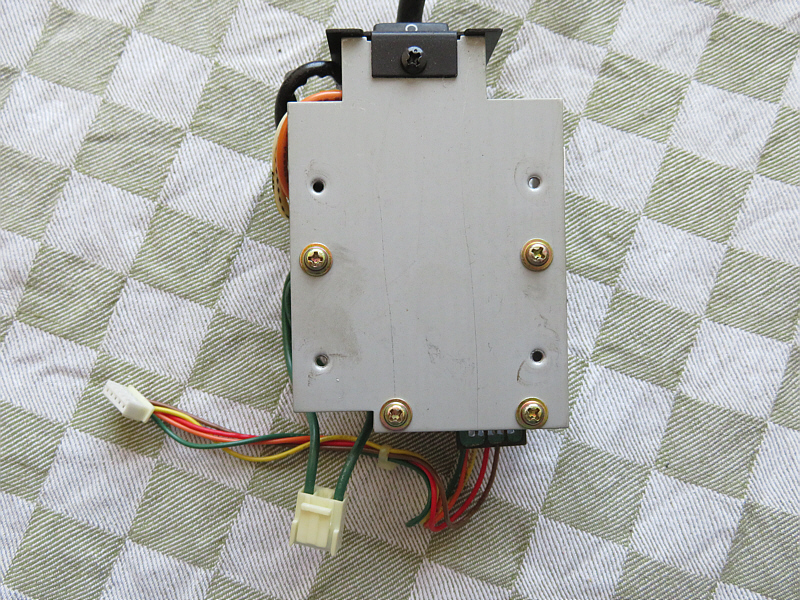
This is the culprit. If you have vintage gear with mains operation, please go sure to replace these capacitors if they are inside.
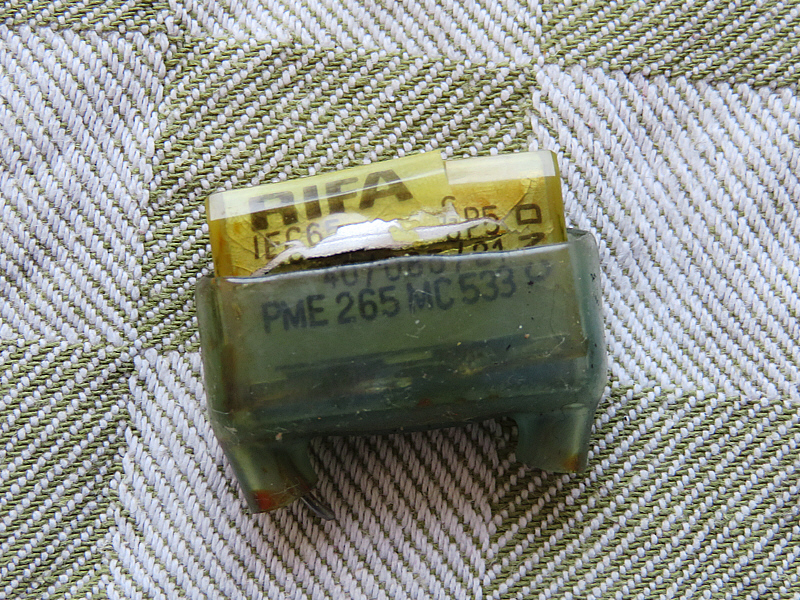
The replacement capacitor, in this case a German WIMA FKP1, has to be bent this way so that it fits inside the chassis. The insulation rubber of the original spark killer doesn’t fit, but it isn’t necessary if you solder it in as in this picture.
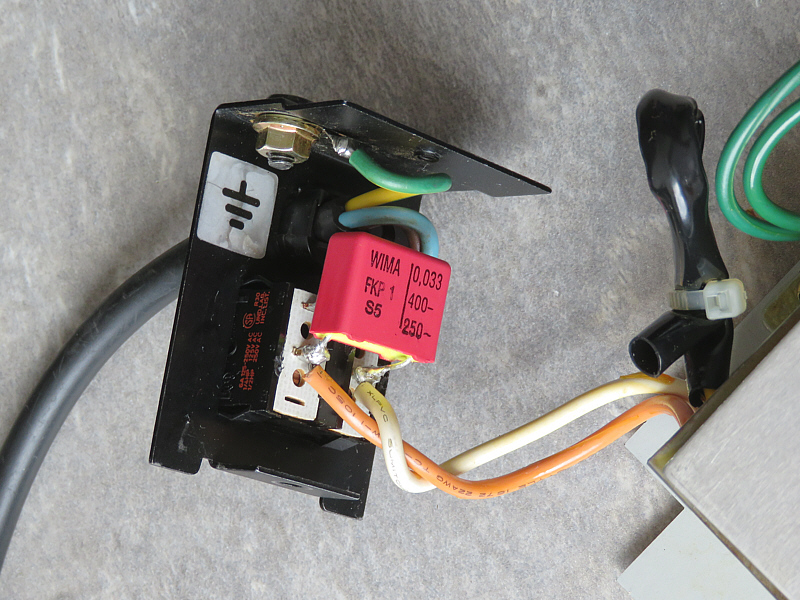
While we’re at it already, better do a full recap. After over forty years spark killers are not the only type of capacitors that can reach the end of their life span. Electrolytic capacitors dry out over time, thus eventually making units working unreliably. (Side note: I have had a few KORG KDD-501 Digital Delay units for the PME-40X that suffered from dry electrolytic capacitors. The effect sound had either low volume or it was distorted. Once I replaced all of them, the effects modules sounded like brand-new again.)
For the circuit board with the switches you have to look for 1000µF axial electrolytic capacitors with a length of 30mm so that they fit inside the rectangle holes. I had liked to use capacitors of a high-quality brand, but all of them seem to be larger than that.
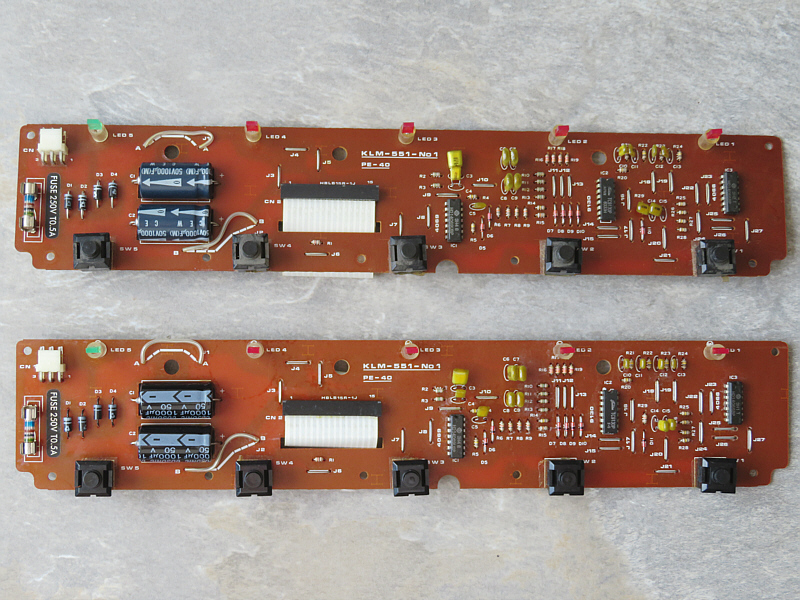
(click on the picture for a version in higher resolution)
The other board has a few more capacitors. I have replaced them with good electrolytic capacitors by Panasonic and Nichicon. The original capacitor C12 is labelled „RB-LL“. LL is for „low leakage“. I haven’t found a direct replacement for the polarized ELNA electrolytic capacitor (red arrow). Our dear Laurie suggested that I could use a non-polarized 1µF polypropylene capacitor instead, and indeed the German WIMA capacitor works perfectly (blue arrow).
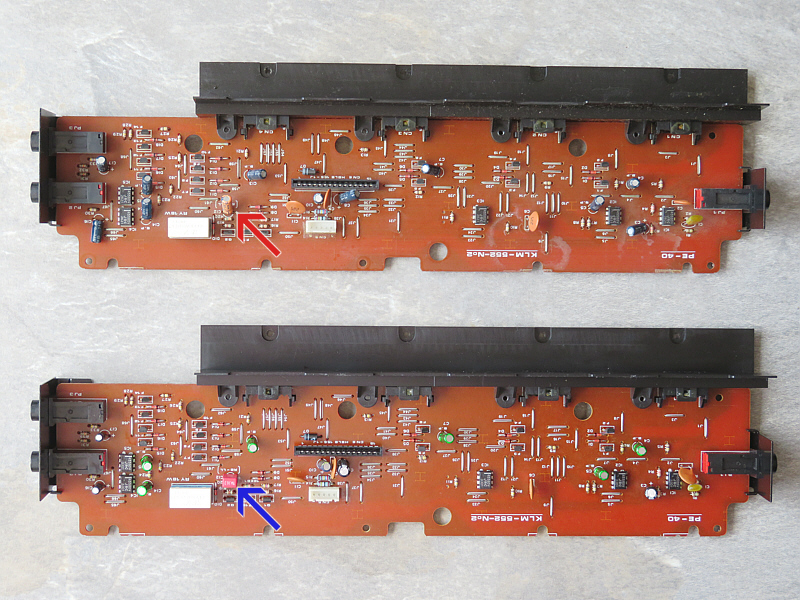
(click on the picture for a version in higher resolution)
Apart from the recapping I resoldered the input and output jacks and cleaned all the connectors to ensure crackle-free operation. The PME-40X pedalboard should now be ready for another 40 years.
In the case of a cracked spark killer you can get rid of most of the smell if you thoroughly clean the disassembled chassis in a bath with vinegar-based cleaner. I have a very sensitive nose and I was surprised by the result. The smell has almost completely vanished.
Everything written above does also apply to the Yamaha-branded version of this effects system, the PSE-40A.
